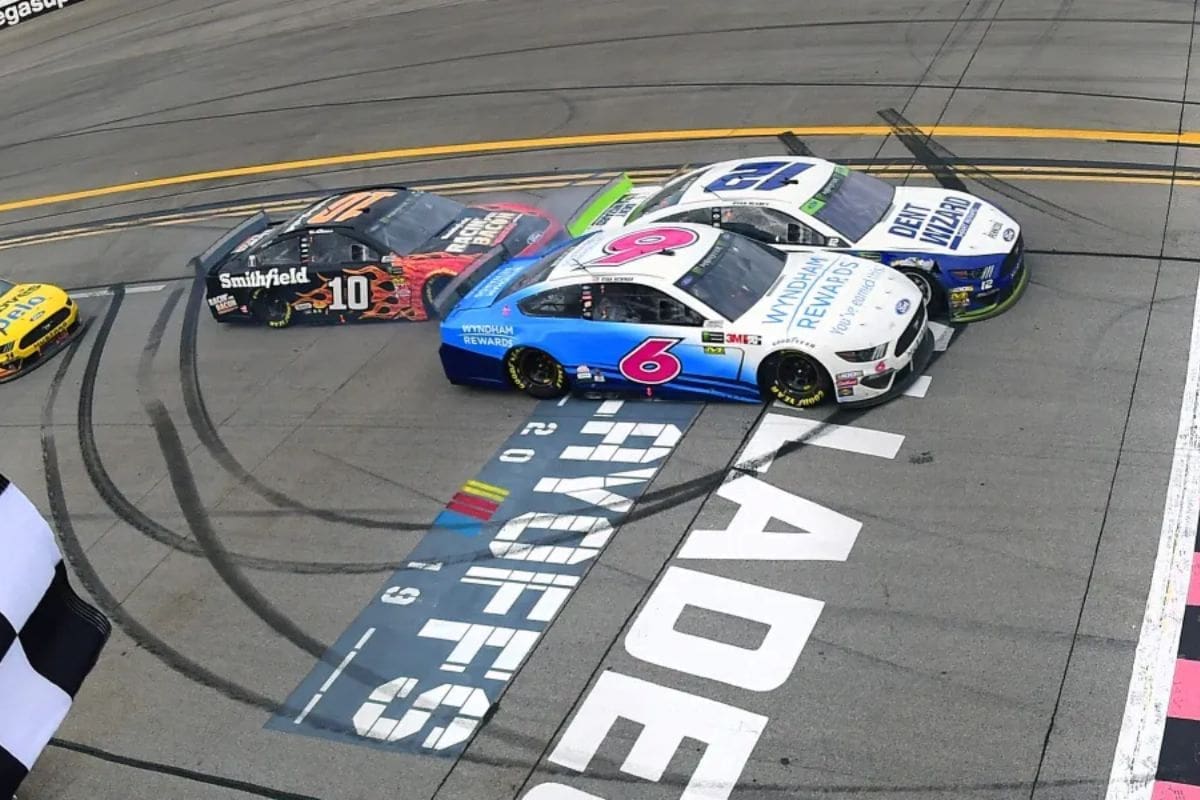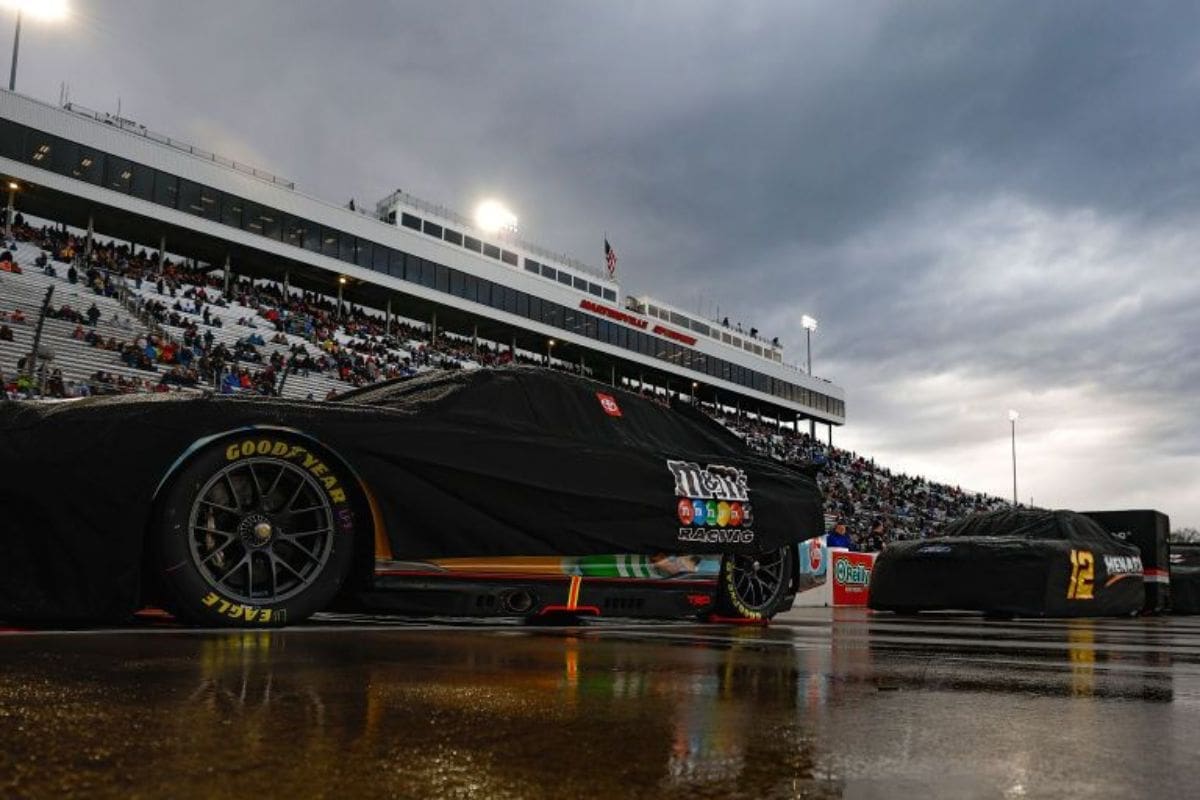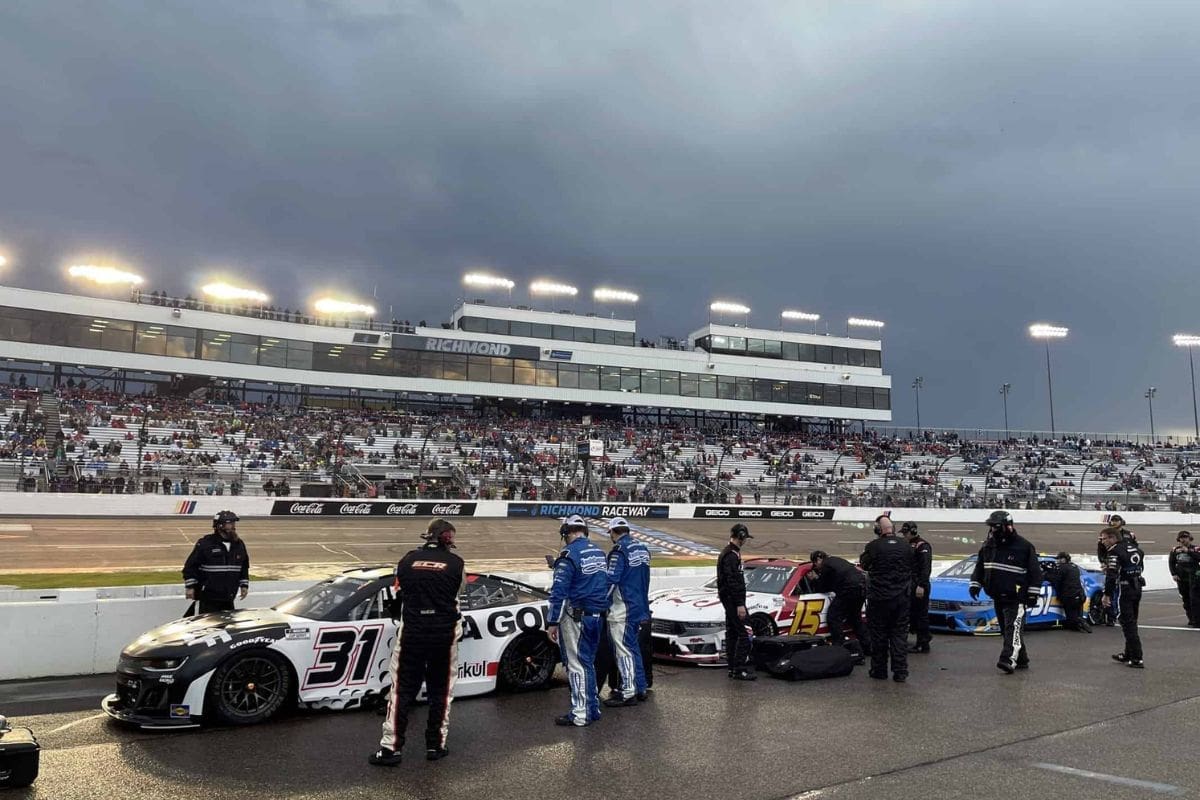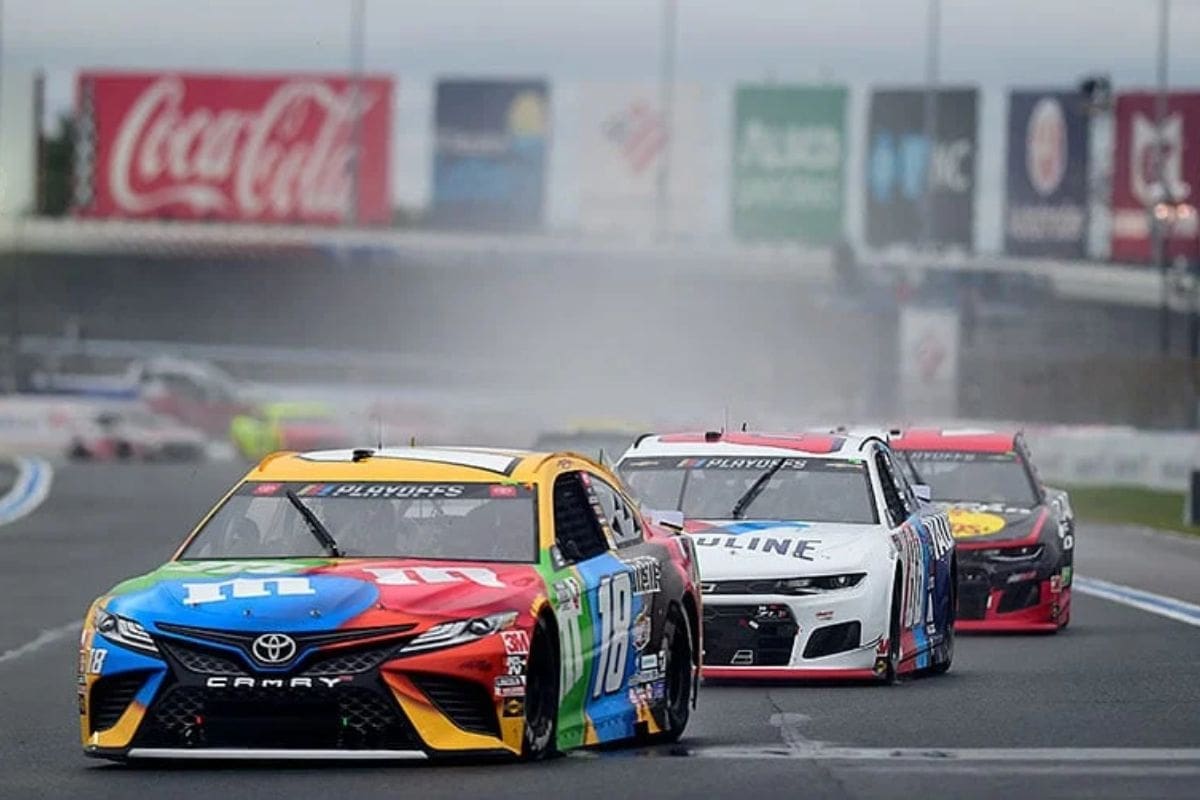NASCAR’s Wet-Weather Tire Debut: NASCAR’s introduction of wet-weather tires at Richmond represents a groundbreaking leap, highlighting the organization’s adaptability and dedication to safety. This historic move signified a radical shift towards addressing rain-affected races, enhancing competitive dynamics under challenging weather conditions. The successful implementation confirmed these tires add strategic complexity, demanding precise decisions from teams while ensuring the safety and speed of drivers on slippery surfaces. This adaptation exemplifies NASCAR’s proactive stance on evolving racing experiences through technological advancements. Exploring this transformative development reveals the intricacies of NASCAR’s commitment to advancement and safety in motorsports.
Key Takeaways
- NASCAR introduced wet-weather tires on an oval track for the first time at Richmond, marking a significant innovation.
- The successful performance of wet-weather tires added strategic complexity and skill to the races.
- Wet conditions led to strategic challenges and decisions, especially regarding pit stops and track positioning.
- The implementation of wet-weather tires demonstrated NASCAR’s commitment to safety and adaptability in changing conditions.
- Incidents during the race prompted a review of safety measures, showing NASCAR’s continuous focus on enhancing driver and spectator safety.
Historic Wet-Weather Tires Debut at Richmond
In a groundbreaking move, NASCAR introduced wet-weather tires for the first time on an oval track during a points-paying Cup Series event at Richmond Raceway, setting an example in the sport’s history amid challenging weather conditions. This decision marked a significant moment, showcasing NASCAR’s willingness to innovate and adapt to maintain the continuity of racing regardless of adverse weather. By opting for wet-weather tires, NASCAR demonstrated a notable shift in its approach to rain-affected races, traditionally postponed or halted due to precipitation.
The deployment of wet-weather tires at Richmond Raceway represented a critical test of NASCAR’s readiness to handle inclement weather, ensuring that the spectacle of racing could endure without compromising the safety of drivers. This move was not merely about maintaining a schedule; it was a strategic initiative aimed at enhancing the competitiveness and dynamism of races under wet conditions. For decades, the sport’s governing body had been cautious about running oval track races in the rain due to concerns over visibility and tire grip. However, the successful introduction of wet-weather tires at Richmond indicated a paradigm shift, opening the door for future events to proceed under similar conditions.
This historic decision highlighted NASCAR’s commitment to technological innovation and safety, pairing the sport’s rich tradition with a forward-thinking approach to race management. By embracing this change, NASCAR set a new standard, ensuring that the race could go on, rain or shine, thereby enriching the racing experience for drivers, teams, and fans.
“I think if you look, we had a scheduled 7:12 p.m. green flag and we went green at 7:31 p.m. I believe, so [only a] 15-minute [delay], which is huge,” Elton Sawyer “We could have been sitting there another hour getting everything dry like we have in the past.”

Success of Wet-Weather Tire Test
Building on the historic implementation of wet-weather tires at Richmond Raceway, the subsequent performance evaluation revealed a notable success, as affirmed by NASCAR Vice President of Competition Elton Sawyer, who highlighted the race’s smooth execution despite initial weather-related apprehensions. The event, which commenced with a mere 15-minute delay, stood as a demonstration of NASCAR’s ability to adapt swiftly to the challenges posed by adverse weather conditions, showcasing not only the reliability of the wet-weather tires but also the organization’s readiness for innovative changes.
The successful deployment of wet-weather tires marked a significant milestone in NASCAR’s storied history, demonstrating a forward-thinking approach to race management and vehicle performance under less-than-ideal conditions. This development was highlighted by the seamless integration of the wet-weather tires into the race’s framework, which did not compromise the competition’s integrity or excitement. Rather, it introduced a new dimension of strategic complexity and driver skill, enriching the overall racing experience for competitors and spectators both.
Furthermore, the effectiveness of the wet-weather tires in maintaining competitive speeds and ensuring driver safety under slippery conditions addressed longstanding concerns about racing in the rain. This achievement reflects NASCAR’s dedication to innovation and safety, reinforcing its position as a leader in motorsports. The success of this wet-weather tire test at Richmond Raceway is a promising indicator of NASCAR’s capability to evolve and enhance the sport, ensuring its resilience and appeal in the face of changing environmental factors.
“First of all, credit to Jim France,” Sawyer said. “This was his vision a couple of years ago. He tasked the R&D center and Goodyear to come up with a tire that we could run in the damp, and was a success.”
“We were able to get the race started pretty much on time. The guys did a great job with the tire, Goodyear did a phenomenal job. We called the competition caution at lap 30, that was about where we needed to be. Looked like we might have been able to go another five or so laps, but the main thing is we were able to get the race started.” – (sawyer)
Challenges and Strategies During the Race
Facing the unpredictability of wet-weather conditions, NASCAR teams were compelled to employ strategic flexibility and precision during the race, particularly after the first 30 laps when a competition caution highlighted the challenges of a soaked pit road. This critical moment highlighted the necessity for teams to maneuver not only the perilous track conditions but also the dangers of a wet pit road, where the usual pit stop efficiency could easily be hindered by the elements.
The introduction of the wet-weather tires for the initial laps showcased their durability and effectiveness. However, the real test of endurance and strategy came post-competition caution, as teams were required to make crucial decisions under pressure. The soaked conditions of the pit road demanded careful planning and flawless execution from pit crews to avoid costly mistakes that could greatly impact the race outcome.
Strategic decisions became crucial as teams had to determine the best timing for pit stops, balancing the need for fresh wet-weather tires against the risk of losing track position. The typical short-track chaos, characterized by aggressive overtaking and close racing, was compounded by the wet conditions, making green flag stops and restarts even more challenging. Teams that excelled in these areas displayed not only superior driving skills but also strategic foresight and flexibility.
The race at Richmond, therefore, was not simply a test of speed but a complex battle of wits and resilience, with teams navigating through the wet track. The successful management of these challenges highlighted the importance of strategic flexibility in NASCAR, setting a new benchmark for racing excellence under adverse conditions.
“Unlike road courses, when pit road is wet and we would allow the teams to make the decisions whether to put drys or wets on, on the short ovals, we’re still not to a place where we feel comfortable doing that,” Sawyer said. “We’re looking out for the safety. This is only our third event that we’ve actually run wet-weather tires […] so now we have another data point.”
“That’s one thing we want to work hard on. We want to be able to start the race, put all the competition in the team’s hands and strategy — when to put tires on, when to take them off — and the sanctioning body not being in the middle of that decision-making. I think we’ll get there sooner than later.” – (sawyer)

NASCAR’s Approach to Wet-Weather Tires
NASCAR’s implementation of wet-weather tires represents a significant stride towards enhancing race safety and strategy under adverse conditions. This move signifies NASCAR’s commitment to adaptability and innovation, ensuring that races can proceed safely despite inclement weather. By cautiously deploying wet-weather tires on tracks characterized by slower speeds and incorporating both left and right turns, NASCAR highlights its clever approach to integrating these tires into the sport. The debut on ovals introduced new variables into race dynamics, presenting both challenges and opportunities for teams and drivers.
The organization’s approach to wet-weather tires is marked by several key considerations:
- Safety First: NASCAR’s primary concern is the safety of its drivers, crews, and spectators. The introduction of wet-weather tires on select tracks demonstrates a careful, measured approach to maintaining high safety standards in varying conditions.
- Strategic Integration: The deployment of these tires opens up new strategic avenues for teams, who must now factor in weather conditions more dynamically when planning race strategies.
- Gradual Implementation: NASCAR’s methodical rollout of wet-weather tires, starting with specific track types, allows for a controlled evaluation of their impact on race outcomes and safety.
- Adaptability: This move reflects NASCAR’s willingness to embrace change and adapt to external factors such as weather, ensuring the continuity and competitive integrity of races.
Review of Race Incidents
Several incidents during the race, particularly involving Kyle Busch and Kyle Larson, prompted NASCAR Vice President Elton Sawyer to elaborate on the intricate decision-making process behind the deployment of caution flags, showing the organization’s strong commitment to ensuring track safety.
In NASCAR racing, the implementation of caution flags is not taken lightly. Each incident on the track is meticulously analyzed in real-time, with a multitude of factors being considered to ascertain the necessity of a caution to guarantee the safety of drivers, crews, and spectators equally.
Sawyer’s explanation shed light on the multifaceted nature of these judgment calls. The decision to deploy a caution flag depends on the immediate assessment of potential hazards—be it debris on the track, adverse weather conditions, or collisions between vehicles. It’s a balance between maintaining the competitive integrity of the race and mitigating risk, a proof of NASCAR’s prioritization of safety without compromising the spirit of the sport.
The incidents involving Busch and Larson served as examples of this delicate equilibrium. In each case, NASCAR’s decision-making apparatus was put to the test, with officials weighing the severity of the situation against the need to keep the race flowing. Sawyer’s insights into these decisions highlighted the organization’s adeptness in dealing with these challenges, reinforcing NASCAR’s dedication to fostering a safe yet competitive racing environment.
Through this thorough review of race incidents, it becomes evident that NASCAR’s approach to safety and decision-making is both rigorous and reflective. The organization’s capacity to adapt and respond to unfolding situations on the track exemplifies a commitment to excellence and a deep understanding of the complexities inherent in motorsports.
“We reviewed that, we looked at it,” he said. “Obviously, the [No.] 11 was the control vehicle. It was awful close, but we deemed it to be a good restart.”
“If you look at the [No. 8] when he went down into [turn] 3, it looked like either he had a right front down or maybe brake failure. Wasn’t real sure. That was really the deciding factor and why to throw it there. And then obviously the [No.] 5 at the end, he’s [spinning] on the front straightaway, driver’s side [to] oncoming traffic. That’s a no brainer. You’re gonna throw that every time.”

News in Brief
The debut of wet-weather tires at Richmond represents a significant milestone in NASCAR’s evolution, addressing the longstanding challenge of rain-affected races. This development not only enhances safety but also preserves the competitive integrity and spectacle of racing in adverse conditions.
Despite initial challenges, the strategic adaptation and technological advancement highlight NASCAR’s commitment to innovation. The successful implementation at Richmond could potentially revolutionize the sport, making races more dynamic and unpredictable, thereby enriching the viewer experience.
Our Reader’s Queries
Q: Can NASCAR race in the rain at Richmond?
A: According to NASCAR Xfinity Series crew chief Tyler Allen, if rain drizzles in the middle of a race, NASCAR will deploy the caution flag and declare wet weather conditions, requiring teams to switch to special rain tires to continue racing.
Q: What happens to a NASCAR race if it rains?
A: If rain starts during a race, it will pause until the precipitation stops and the track dries. A passing shower might only briefly halt the race, but prolonged heavy rain could lead to a lengthy suspension, potentially even delaying the race until the next day.
Q: Why does NASCAR not have wet tires?
A: The straightforward explanation is that NASCAR Cup, Xfinity, and Truck teams utilize tires without treads. These tires lack grip in wet conditions, rendering them ineffective on ovals when rain occurs.
Also Read: Rain Threatens Richmond Race: NASCAR’s Bold Tire Twist Revealed!

